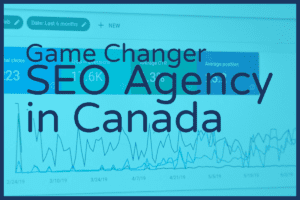Email Opt in – The Why and Where of Forms
 So you have a great email newsletter. It’s award winning, chock full of relevant and useful information, and a tool that will give readers a competitive edge in your field. Do you have an email opt in form?
So you have a great email newsletter. It’s award winning, chock full of relevant and useful information, and a tool that will give readers a competitive edge in your field. Do you have an email opt in form?
But is anyone reading it?
Having an amazing email marketing campaign only works as a marketing tool if people actually read your emails. They’re more likely to read your emails if they have subscribed to your emails. People only subscribe to your emails if you offer opportunities for them to do so. Thus, we hit upon the necessity of having an email opt in form.
It’s like building a world-class restaurant but forgetting to buy knives and forks. How will people eat the food? An email opt in form is your fork. Through it, people can use your content and engage with that award-winning, relevant and useful content you have crafted.
Gaining Permission, Gaining Access
Businesses can certainly choose to buy third-party email lists and send out messages to potential readers this way. However, the likelihood of someone reading an unsolicited email — no matter the content — is low.
Savvy email readers (which is who you’re targeting, after all) do not open emails from unknown sources because of the danger of accidentally downloading a virus. Spam filters weed out these unsolicited emails directly to a junk mail folder.
Building your own email subscription list through an email opt in form means you’re targeting readers who actually want to open your emails and follow through on the message or call to action.
Keep it Simple
The best email opt in forms stick to the basics. They do not ask subscribers to give a complete family tree, offer a chronology of all their childhood pets or ask for an alphabetized listing of their favorite foods. (You laugh, but some of those forms are long.)
Ask for the information you need and no more. Potential subscribers are more likely to fill out a short, easy form than invest in a long, arduous form no matter the potential content.
Location, Location, Location
Once you’ve nailed the wording for your opt-in form, the next step is where to place it on your website and in your social media channels. Easy. Okay, so that’s not always as easy as it seems.
First, consider the channels your target audience visits most. This could be your home web page, a specific landing page or a social media channel. Google Analytics can help you decide what web pages generate the most traffic.
You should also consider the placement of the opt in form on the web page itself. Ideally, you want the form in a placement that does not need the potential client to scroll down to see the form. They might never scroll down far enough.
Frame Up Job
Placement is half the battle. Also pay attention to the information you include to entice a potential client to subscribe. List the benefits of subscribing or the top reasons to subscribe.
Also include information to reassure the subscriber that you won’t bombard them with useless emails. Provide a schedule of what subscribers can expect and when. This information makes it clear that your emails will offer a value to the subscriber rather than clog up their inbox.
Test It Out
Finally, test your email opt in form against your current method. Running an A/B test with the process you now use to gain email subscribers and a new opt-in form will yield valuable information. Use the data you gain from the test to change, edit or tweak your email opt in form for the greatest results.
The ultimate goal with any email newsletter or campaign is for potential clients to read the email and take action. This won’t happen without a dynamic opt in form that captures subscribers.



